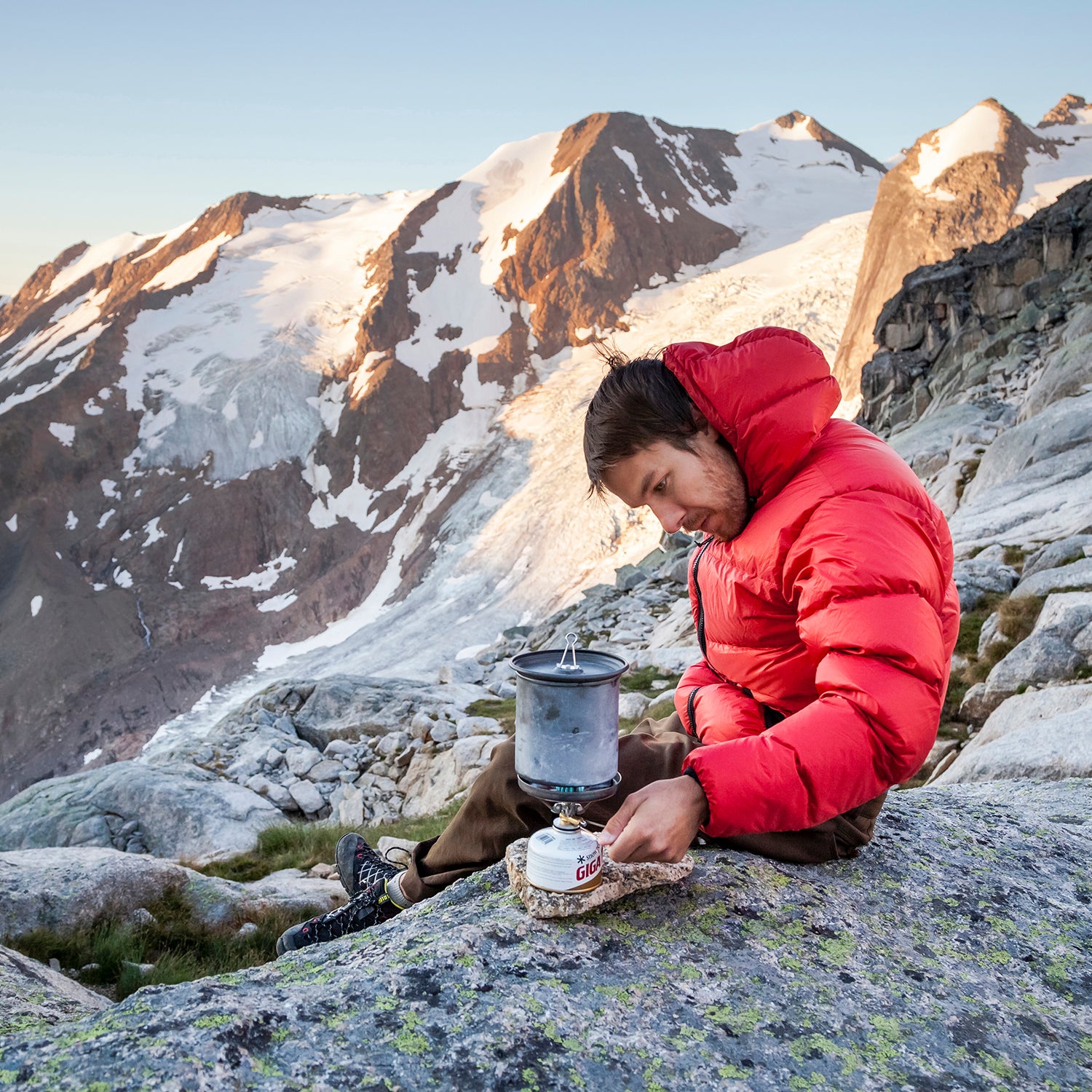In many places—like New Mexico, for instance—fall is the best time to go backpacking. But what’s the best cooking fuel to use? Canister or liquid? Which works best on cold mornings? For help, I called Doug Sanders, the category director for combustion at MSR*, a Seattle-based company that builds hundreds of thousands of backpacking stoves per year. Here’s his breakdown.
Canister Fuel
How It Works
Canisters are full of pressurized gasses. When you open the canisters, the fuel shoots out and fuels your fire. Most canisters use some mix of butane and propane or isobutane and propane.
Pros
Canisters are lighter for shorter trips. They’re easier to use because they come already pressurized, screw on, and create a ready-made platform for your stove.
Cons
Canisters are as efficient as liquid gas, but you have to bring a whole canister instead of measuring out a specific amount (which means you might end up with extra weight). They’re more expensive than liquid gas, create more waste, and don’t work as well in cold weather because they lose pressure as temperatures drop.
Buying Tips
If you plan to use your canister in cold temperatures, look for isobutane-propane mixes rather than butane-propane blends. If you’re buying a canister for a warm-weather trip, you can get away with a butane-propane mix.
Use Tips
If you’re using canisters in cold weather, warm them in your jacket before use.
Liquid Fuel
How It Works
Instead of coming already filled and pressurized, you fill, then pressurize these canisters on your own using the included pump. You also need to prime the stove by burning a little liquid fuel on the burner. That heat turns the incoming liquid fuel into gas. Most of these stoves burn several different kinds of fuel. More on that below.
Pros
You fill the canister and determine, down to the ounce how much fuel you pack, making liquid fuel canisters more efficient for longer trips. Cold temperatures don’t affect fuel performance because you can always repressurize the canister. Liquid fuel is easier to get your hands on—especially if you get a stove that can use multiple types of liquid fuel. And liquid fuel is considerably cheaper.
Cons
Priming a liquid-fuel stove can be tricky—and can create fireballs if done incorrectly. These stoves aren’t as easy to pack because of their fuel lines.
Buying Tips
Make sure your stove can run on multiple types of fuel—the manufacturer should clearly note this—before putting anything but white gas in the canister.
Use Tips
Be careful when priming your stove. People tend to use too much fuel, which is a waste and can cause a large, dangerous fire.
Types of Liquid Fuel
White gas: This is the best, cleanest-burning fuel you can put in your stove. It’s readily available at outdoor stores but hard to find while traveling abroad or in rural areas.
Kerosene: “Kerosene is well refined and packaged nicely and burns well,” Sanders says. It’s easy to find kerosene in hardware stores but harder to find while traveling internationally.
Diesel: “It’s really thick, hard to light, and smelly—like burning motor oil—but if there is transportation nearby, you can find diesel fuel,” Sanders says.
Automotive gas: “It’s easier to light up than diesel, but it contains stuff like ethanol and all of these additives to make it run better in your car engine. [Those additives] generally get left behind in your engine. Leaving stuff behind in your stove is not a good thing. We call that clogging,” Sanders says.


